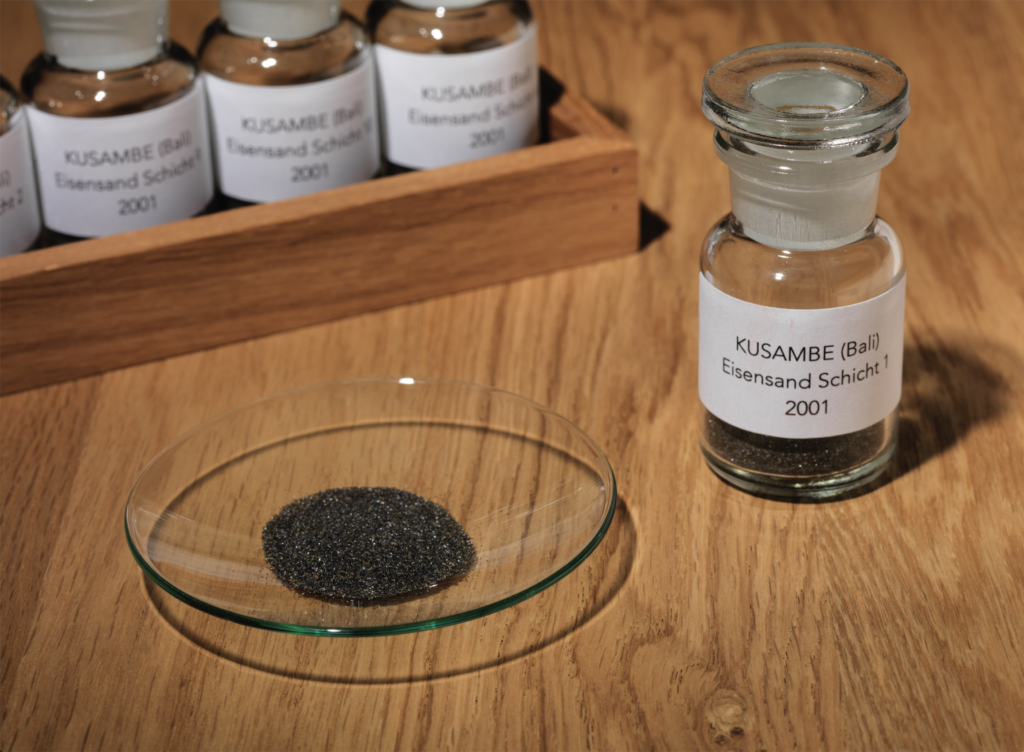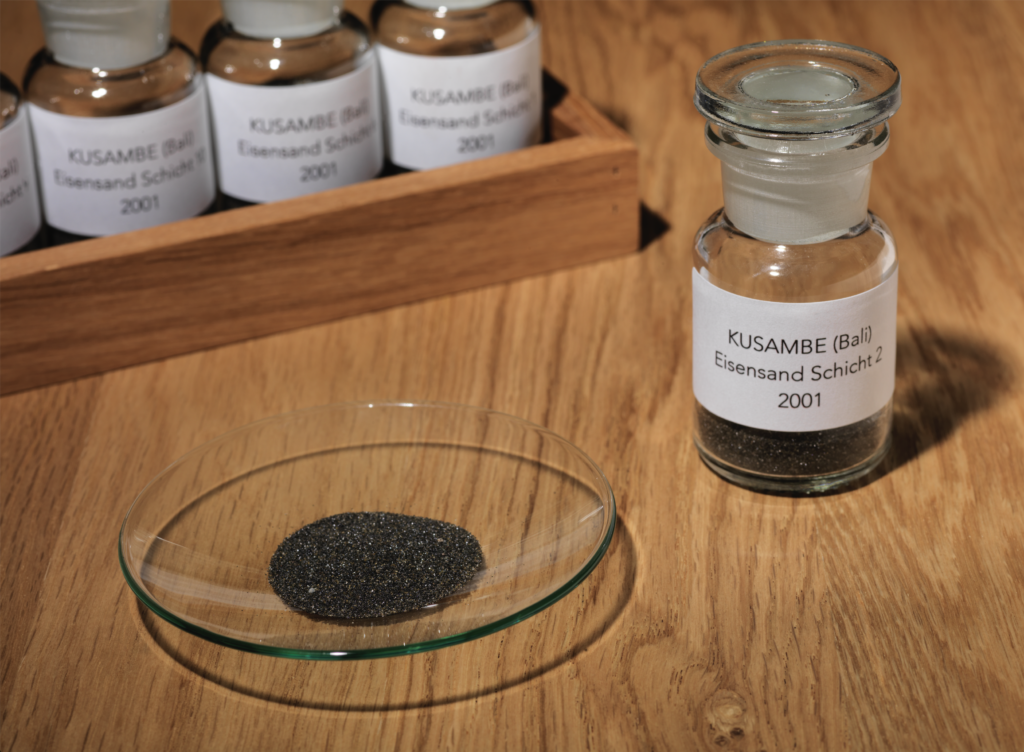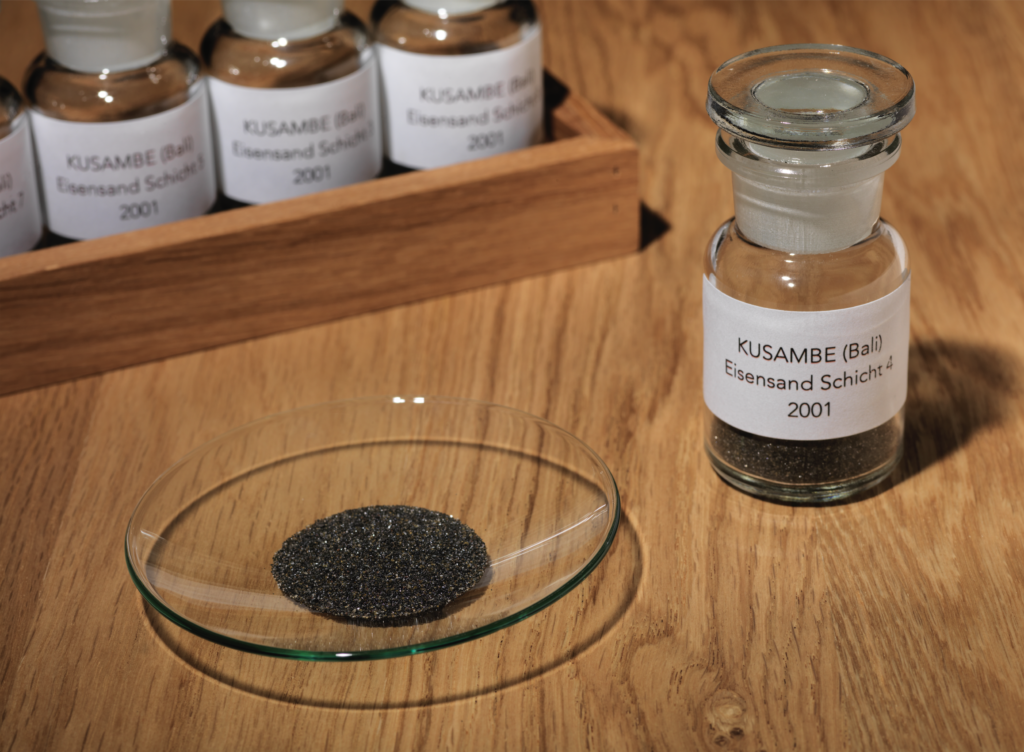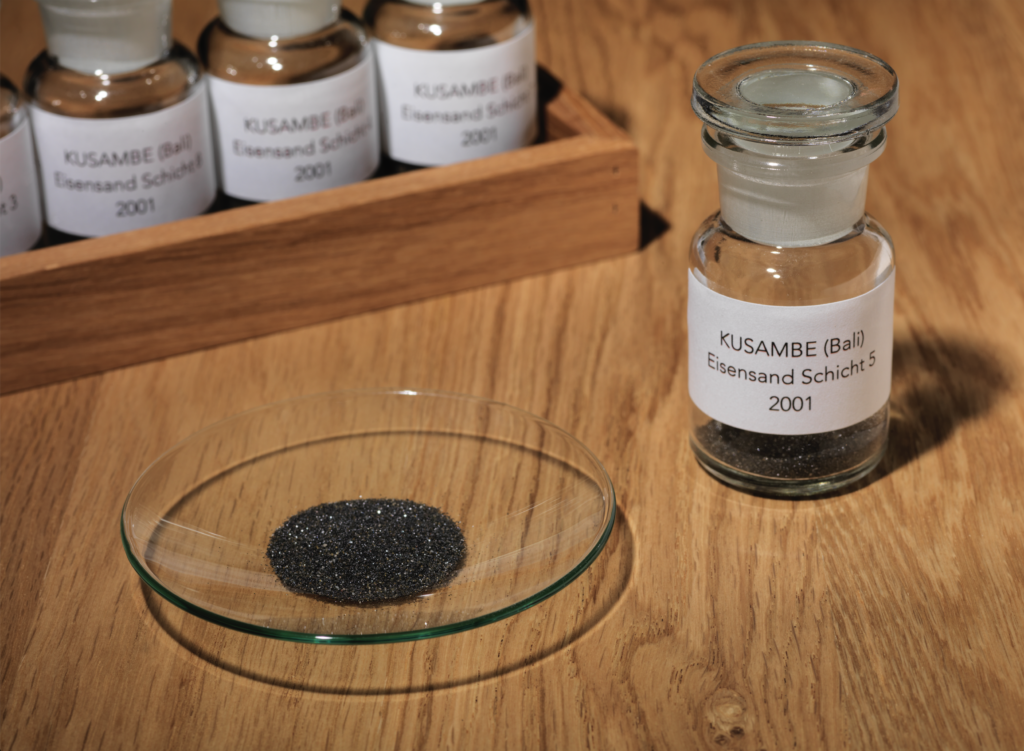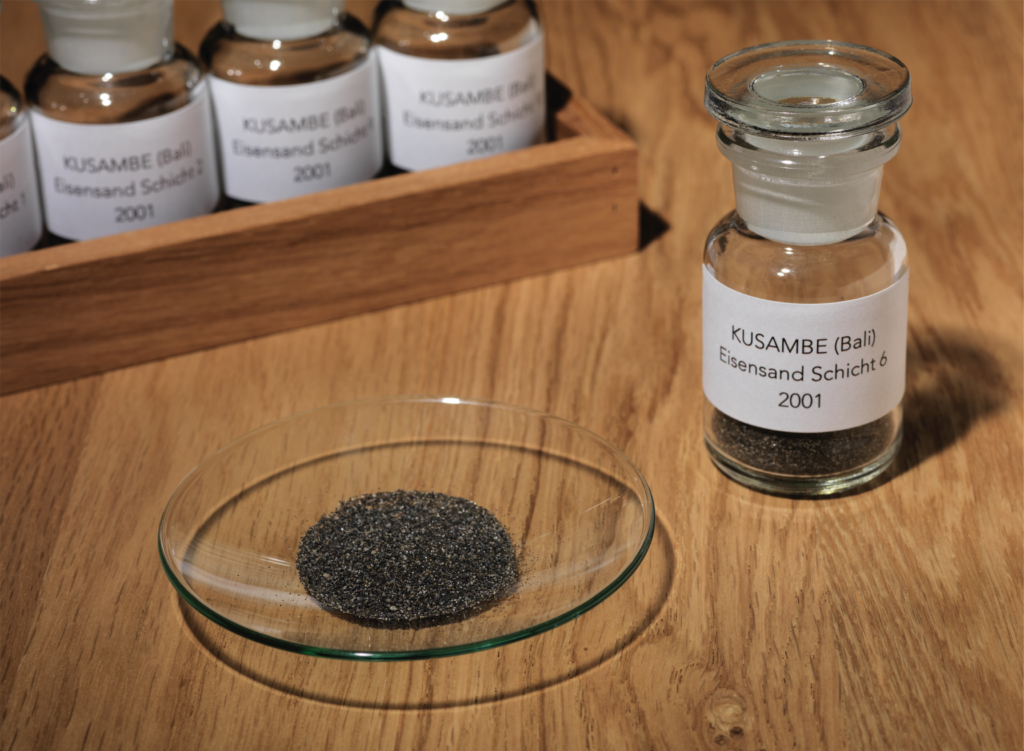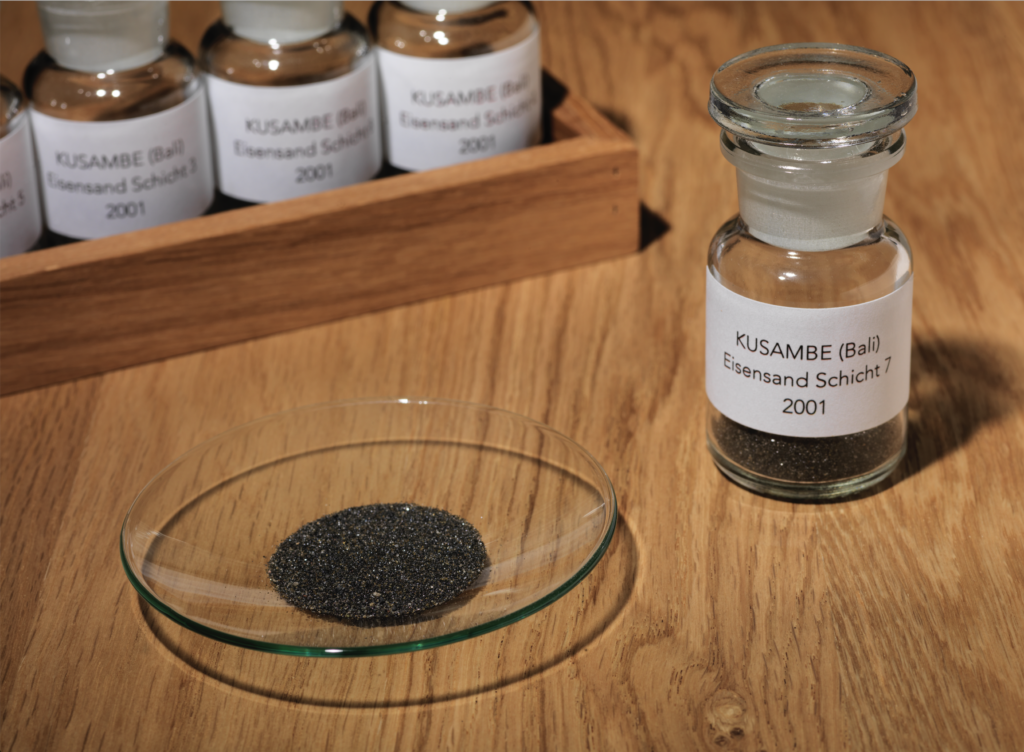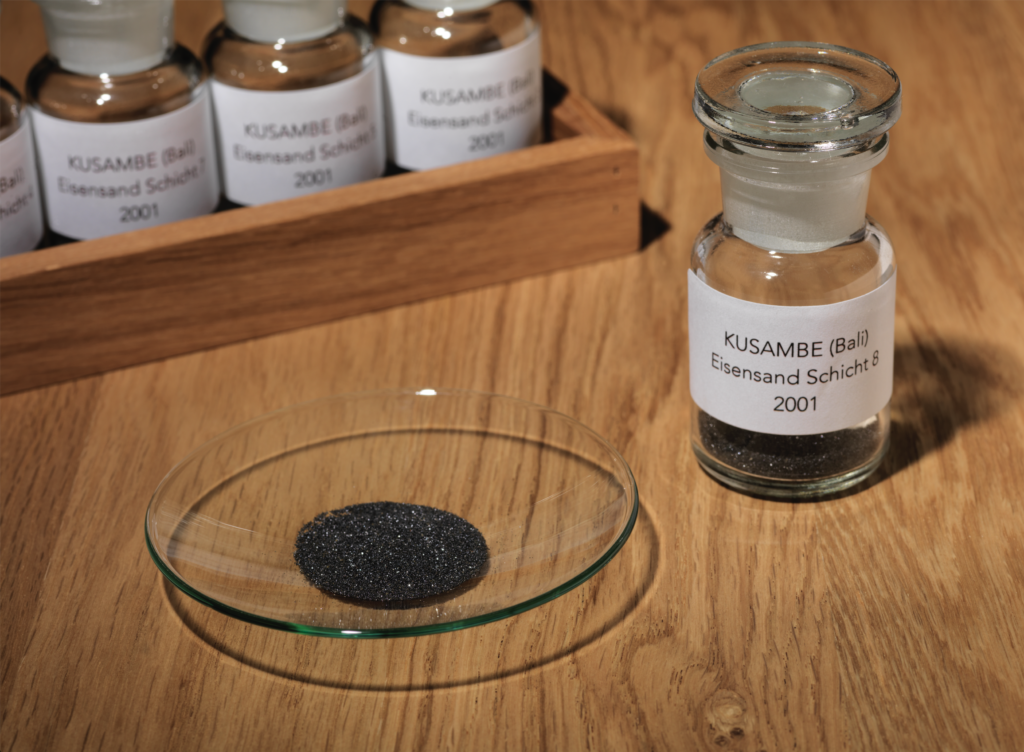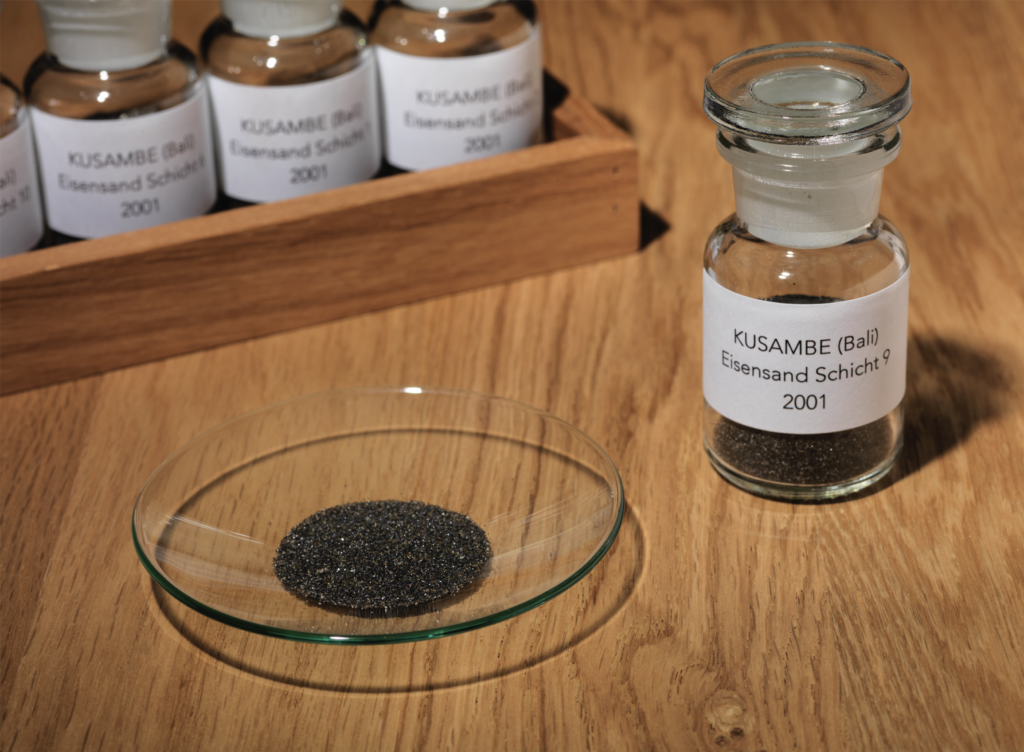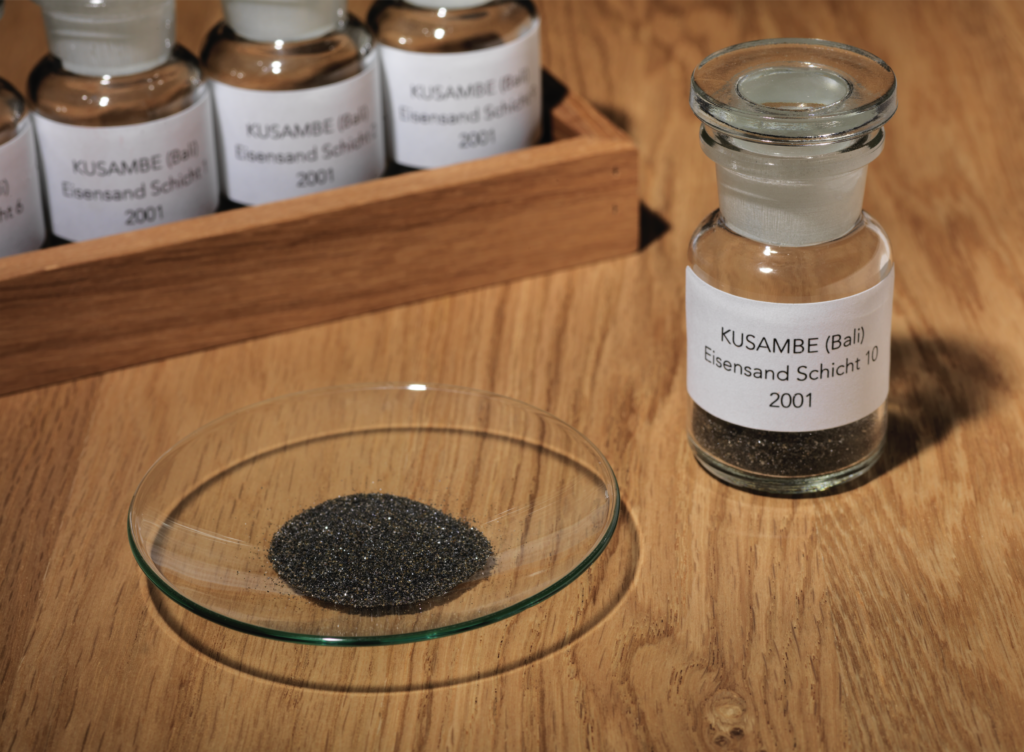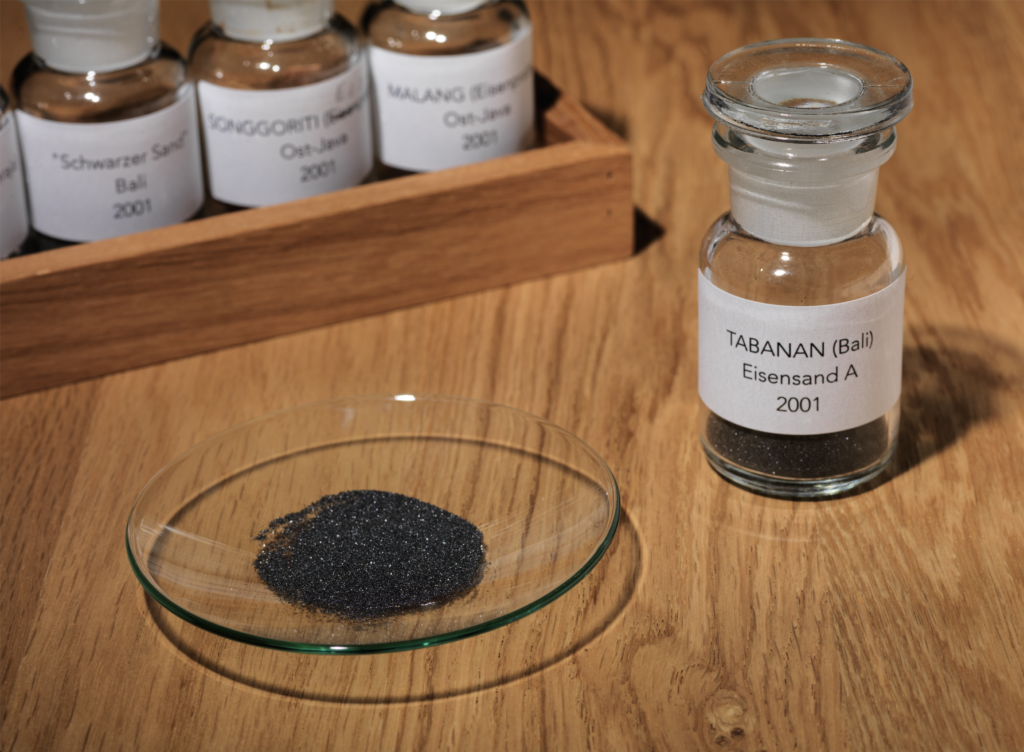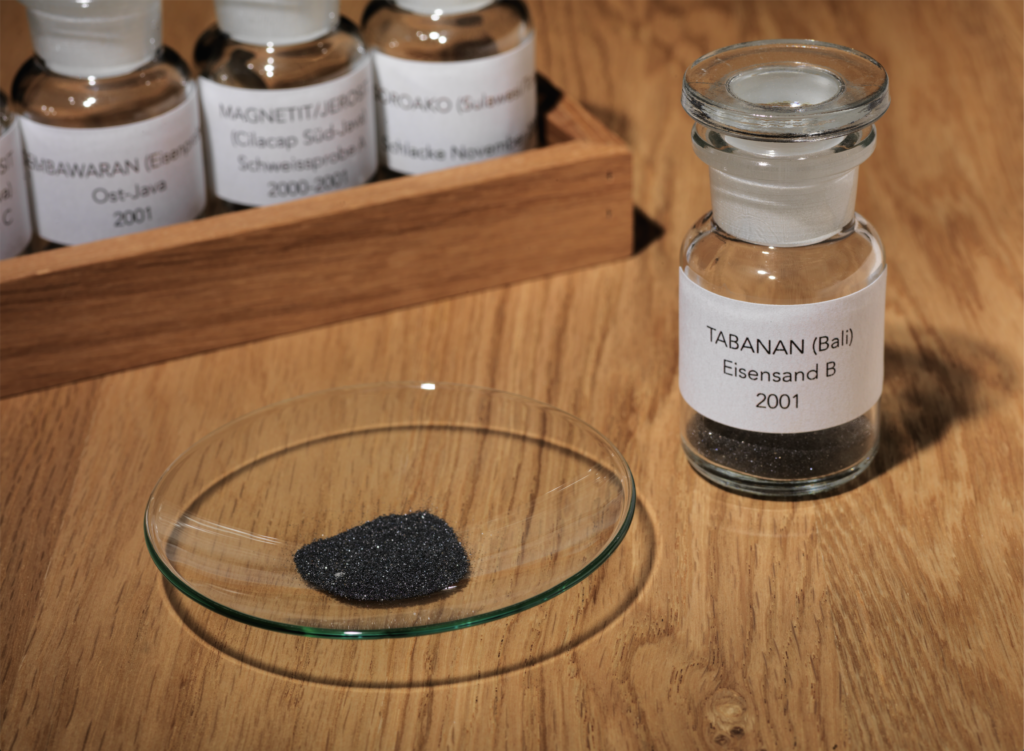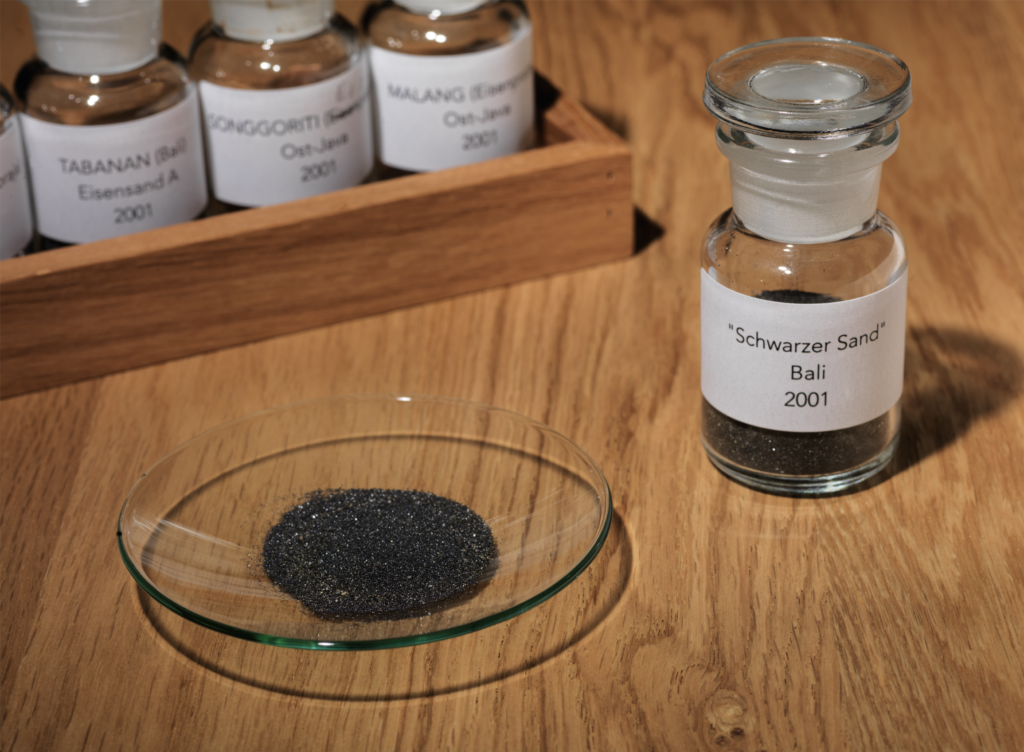Magnetite
In the shore region of Tabanan, Bali, and Cilacap Regency, South Java, Dietrich Drescher made iron from Magnetite that occurs as black sand on the shores. Today, the town of Cilacap is also the most important seaport on the southern coast of Java.
Magnetite is a rock mineral and one of the main iron ores, with the chemical formula Fe3O4. It is one of the oxides of iron and is ferrimagnetic; it is attracted to a magnet and can be magnetized to become a permanent magnet itself. It is the most magnetic of all the naturally occurring minerals on Earth. Naturally-magnetized pieces of magnetite, called lodestone, will attract small pieces of iron, which is how ancient humans first discovered the property of magnetism.
Magnetite is sometimes found in large quantities in beach sand, such as in Cilacap and Tabanan. The magnetite sand, eroded from rocks, is carried to the beach by rivers and concentrated by wave action and currents. Huge deposits have been found in banded iron formations. These sedimentary rocks have been decisive to infer changes in the oxygen content of the atmosphere of the Earth.
In large enough quantities magnetite can affect compass navigation. In Tasmania, there are many areas with highly magnetized rocks that can greatly influence compasses. Magnetite can also be found in fossils due to biomineralization and are referred to as magnet fossils. There are also instances of magnetite with origins in space coming from meteorites.

